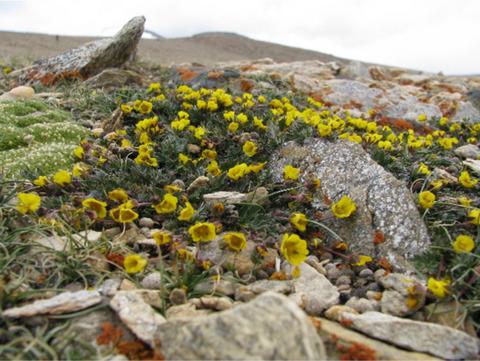Our official English website, www.x-mol.net, welcomes your
feedback! (Note: you will need to create a separate account there.)
Climate warming drives Himalayan alpine plant growth and recruitment dynamics
Journal of Ecology ( IF 5.3 ) Pub Date : 2020-07-02 , DOI: 10.1111/1365-2745.13459 Jiri Dolezal 1, 2 , Veronika Jandova 1, 2 , Martin Macek 1 , Ondrej Mudrak 1 , Jan Altman 1 , Fritz Hans Schweingruber 3 , Pierre Liancourt 1, 4
中文翻译:

气候变暖推动喜马拉雅高山植物的生长和招聘动态
更新日期:2020-07-02
Journal of Ecology ( IF 5.3 ) Pub Date : 2020-07-02 , DOI: 10.1111/1365-2745.13459 Jiri Dolezal 1, 2 , Veronika Jandova 1, 2 , Martin Macek 1 , Ondrej Mudrak 1 , Jan Altman 1 , Fritz Hans Schweingruber 3 , Pierre Liancourt 1, 4
Affiliation

|
- Understanding how climate influences plant reproduction and growth at contrasting range limits is crucial for predicting how species' ranges may shift in response to ongoing climate change. Trees and shrubs have shown warming‐induced increases in performance at upper elevation limits but reduced performance at lower distributional limits due to warming‐driven drought limitation. Whether these differential responses are also valid for alpine forbs exposed to accelerated warming remains largely unknown.
- We examined climate signal recorded in annual growth and recruitment over the past 60 years in the alpine forb Potentilla pamirica in Western Himalayas, and tested whether the responses to recent climate warming differ between dry steppe, wet alpine and cold subnival zone within the species 5,250–5,900 m elevation range. We reconstructed recruitment and growth chronologies from 1,019 individuals spanning 1–73 years, and more than 21,500 annual growth rings.
- We identified contrasting climatic controls of recruitment and growth at opposite elevation range margins, as well as contrasting demographic trends identified from age distributions. In lower‐elevation steppes, recruitment increased with high late‐winter snowfall and decreased with high summer temperatures, while growth increased with high summer precipitation. Conversely, warm winters and summers in higher‐elevation alpine and subnival zones support growth and recruitment, while snowy winters reduce them, especially at their upper elevation limit. The age distribution revealed greater numbers of younger individuals, indicating healthy growing populations, in the alpine habitat, while evidence of ageing plant populations was observed in steppe and subnival zones.
- Accelerated warming since the 1990s reduced growth and recruitment in dry steppes while supporting plant performance in the alpine habitat. The recruitment in the subnival zone did not peak during the past warmest decade due to concomitant extreme snowfall events.
- Synthesis. Our results provide novel information on population‐specific climate dependency of plant recruitment, growth and population dynamics, suggesting the high vulnerability of high‐elevation Himalayan ecosystems to climate change. This is partly balanced by high species longevity and slow radial growth securing a long‐term population persistence. Continuing trends of extreme snowfall events at higher elevations and droughts at lower elevations may lead to species range contraction.
中文翻译:

气候变暖推动喜马拉雅高山植物的生长和招聘动态
- 了解气候如何在不同的范围限制下影响植物繁殖和生长对于预测物种范围可能如何响应不断变化的气候变化至关重要。树木和灌木在高海拔地区表现出因气候引起的性能提高,但在较低分布范围内表现为因干旱引起的干旱而降低。这些不同的反应是否也对暴露于加速变暖的高山福布斯有效。
- 我们研究了喜马拉雅西部喜马拉雅高山委陵菜( Patentilla pamirica)在过去60年中以年均增长和募集的方式记录的气候信号,并测试了在5250–5种物种中,干草原,湿高山和冷亚热带带对近期气候变暖的反应是否不同海拔范围5,900 m。我们重建了从1,019名跨过1至73年的人员和超过21,500个年增长环的招聘和增长年表。
- 我们确定了相反的海拔范围边界处的募集和生长的气候控制差异,以及根据年龄分布确定的人口趋势。在海拔较低的草原中,随着冬末降雪量的增加,补给量增加,而随着夏季气温的升高,补给量减少,而夏季降水量增加,则增加量增加。相反,高海拔的高山和亚寒带地区的冬季和夏季温暖,有利于生长和补充,而下雪的冬季则降低了生长和补充,特别是在海拔较高的地区。年龄分布表明,在高寒生境中,年轻人的数量增加,表明种群正在健康增长,而在草原和下亚热带地区则观察到植物种群老化的迹象。
- 自1990年代以来加速的变暖减少了干草原的生长和繁殖,同时支持了高山栖息地的植物生长。由于随之而来的极端降雪事件,在过去的最温暖的十年中,在亚寒带地区的征兵人数没有达到高峰。
- 综合。我们的结果提供了有关植物招募,生长和种群动态对特定人群的气候依赖性的新颖信息,表明高海拔喜马拉雅生态系统对气候变化的高度脆弱性。高物种寿命和缓慢的径向生长在一定程度上平衡了这一点,从而确保了长期的种群持久性。高海拔地区极端降雪事件和低海拔地区干旱的持续趋势可能导致物种范围缩小。











































 京公网安备 11010802027423号
京公网安备 11010802027423号